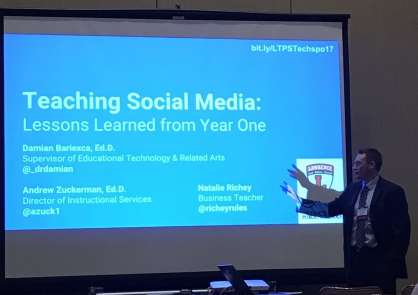So I’ve started my 2017 Reading Challenge off on a real tear, devouring nearly 13 books in the first two months alone (my goal for the year was 15!). I’m grateful that life circumstances are affording me the opportunity to pleasure read as much as I am – certainly more than I have in a very long time – so I figured I’d pause and reflect a bit periodically here on some of what I’m reading, since most of it is related to education.
“Have you ever felt as if a supervisor, coworker, or even your own school board was trying to sabotage you?” reads the bright yellow text on the back of Escaping the School Leader’s Dunk Tank: How to Prevail when Others Want to See You Drown, by Rebecca Coda & Rick Jetter. Thankfully, the answer for me in my current position/district is a resounding NO, but that hasn’t always been the case throughout my career. It’s through that lens – of a targeted employee, not necessarily a targeted leader – that I read this book, and I think the stories were just as relatable and the advice just as relevant.
The bulk of the book is anecdotes shared by current and former school leaders – an assorted variety of principals, superintendents, and other similar building- and district-level administrators – followed by relevant commentary and insight from the authors. I think it would be easy for the uninitiated to read these stories and engage in a bit of Monday-morning quarterbacking, but do so at your own risk. It’s very easy to read about these horrible situations from a neutral third-party perspective, but I’m here to tell you that the decisions and analysis don’t come quite as easy when you’re mired in the thick of it.
If you’re lucky enough to never have had that bullseye on your back, I recommend reading this while waters are calm so you know the warning signs to look out for (or, equally as valuable: know that there may never be warning signs and a bad situation could just hit you out of the blue – when and how you respond is even more crucial then). If you are currently experiencing or have experienced this, Dunk Tank offers some tips for how to be proactive as well as how to cope and respond if and when things begin to go south.
As I reflect on my own dunk tank experiences (admittedly mild by the book’s standards, but my employment was still at stake), I think the biggest takeaways from this book that I would have found most helpful at the time were:
- It’s not you, it’s them (maybe). I’m good at owning up to my mistakes, my failures, and my shortcomings, and I’ve always been on the lookout for ways to be a better scholar, writer, teacher, psychologist, administrator, friend, dad, and husband. That’s a big part of why my dunk tank experience impacted me so much and the residual effects lingered – what did I do? Why wasn’t I good enough? Didn’t I try my best? Am I just not cut out for this? Am I a failure? Coda & Jetter would suggest that while introspection is good, sometimes the person trying to dunk you has reasons, agendas, or issues all their own, and you’re just collateral damage. If it wasn’t me in the dunk tank at that time, it would have been somebody else (and subsequent experience has confirmed that to be the case for me). Look inward but don’t consume yourself; sometimes, the problem really does lie with someone else.
- Quitting isn’t quitting. There may come a point in your dunk tank experience when you need to take a long, hard look at the situation and decide if you can continue to work there. I know this is much easier said than done in most cases, but taken on balance, what is more important: the job you currently have in which you are being set up for failure, or your long-term mental and physical health? I think in our profession especially, leaving a job can be seen as admitting defeat or “giving up”, and I admit to falling victim to that mentality from time to time as well. But when you have tried everything to stay out of the dunk tank, then tried everything to get out of the dunk tank, and you’re still in the dunk tank, well… that’s a call you have to make for yourself in your specific life situation. I know that for me, staying and trying to make a bad situation better was a Sisyphean task, and leaving really was the only thing I could do to improve my situation, and better to do so on my own terms than on someone else’s. It was scary as hell at the time, but in retrospect, has proven in spades to have been the right decision.
I think I have one more post on the dunk tank in me, but I’ll cut it here for now. In the meantime, my final thoughts on this book are these: while this book is aimed at school leaders, I’d suggest that anyone who works in a hierarchical organization could benefit from the stories, insights, and lessons shared in this book and apply them to their own situations. Give it a read yourself, or – even better – get your administrative team to do a book study on it!
